The Specialists (1969)
Directed by: Sergio Corbucci
Written by: Sabatino Ciuffini, Sergio Corbucci
Starring: Françoise Fabian, Gastone Moschin, Johnny Hallyday, Sylvie Fennec
AKA GLI SPECIALISTAS, DROP THEM OR I’LL SHOOT
ITALY/FRANCE/WEST GERMANY
AVAILABLE ON BLU-RAY: 18TH MAY, from EUREKA ENTERTAINMENT
RUNNING TIME: 104 mins
REVIEWED BY: Dr Lenera
Renowned gunfighter Hud Dixon returns to the town of Blackstone to seek out the men responsible for the lynching of his brother Charlie who got blamed for a robbery of the town bank. The money is still missing, but lots of people are looking for it, including a Mexican bandit named El Diablo, the businessmen of Blackstone who lost all of their savings, and Virginia Pollywood, the lady bank owner who’s using her feminine wiles to manipulate the most powerful men in town, including the ineffectual Sheriff Gideon, who’s prohibited the carrying of guns in Blackstone in hopes of a peaceful resolution to the town’s problems – though of course that’s not very likely to happen.…
Gone, I think, are the days when Sergio Leone was widely considered to be the only spaghetti western director worthy of note. The work of Sergio Corbucci and Sergio Sollima [the three Sergios!] has undergone some much deserved reappraisal in recent years. The often dark and cynical output of Corbucci is perhaps slightly hamstrung by the fact that his most popular film, Django [the film that launched a thousand sequels, most of them unofficial], is not at all one of his best; I’d offer up The Great Silence [with an ending that is as brave as they come and which knocked me for six the first time I saw the film] and The Mercenary to be his best work. The Specialists may not at first come across as a notable offering; it initially seems somewhat ‘by the numbers’, right down to its premise and its characters, and rehashing not just familiar ingredients from other westerns but other Corbucci westerns including even names, but its plot is well worked out and the film is full of odd and interesting touches, finally getting downright strange in the final reel. Its unusual feel can probably be partly attributed to it being largely shot with a mostly French cast for a change and with the unmistakable sight of the Alps often appearing the background rather than the usual Spanish locations, though a quick look revealed to me that, actually, quite a few ‘spaghetti’ westerns were more French than Italian and/or Spanish. Despite often coming across as a purely fun exercise from Corbucci, it’s possible that it showcases his bleak view of the world as strongly as The Great Silence; though what everything in the last section is intended to mean only he and co-screenwriter Sabatino Ciuffini may have been entirely sure of!
So with little background information easily accessible [though I’m sure the special features on the Blu-ray will provide plenty], lets delve straight into the movie itself. We open with the camera tracking some birds flying in front of the Alps before we alight on somebody being thrown into a muddy pool. A robbery of a stagecoach just outside a post office is taking place, and the bad guys are hurling some of their victims into this mud and causing them to fight over a gold coin, all this seemingly being just for the fun of it seeing as the people with money are a few metres away, standing up and being held at gun point. El Diablo, the leader, goes into the post office to neck some water before a voice says to him [and you can just imagine Clint Eastwood saying this], “keep drinking, I get nervous when I arrive and stop drinking”. Looming out of the dark is the face of Hud, who shoots dead all of the robbers except for one, whom he lets live despite the complaining of one of the robbery victims. Another calls him a friend, but the reply he gets is, “I ain’t your friend, Hus has no friends”. Yes, Hud is another archetypal loner, though this one’s famous for his gun fighting skills and isn’t quite as lonely as some seeing as he’s very much interested in the ladies. After a rather non-descript, salon music-type opening musical theme, we see some of the folk that he saved go to the nearby town of Blackstone and tell Sheriff Gedeon what’s happened and that Hud is in town. The way in which we now learn of Hud’s brother’s lynching and the bank robbery that’s taken place is somewhat ham-fisted, especially the way they argue over who was most responsible for Charlie’s death. Meanwhile Hud bursts into the home, just outside of town, of Charlie’s widow Sheba to get Charlie’s old gun, and, in typical spaghetti western style, lets a villain slap her in the face several times so she falls to the ground before he comes to the rescue.
The heavy’s name is Boot Johnson, and he’s just one of a number of folk in this town who are looking for this stolen money and may just possibly know more than they’re letting on. Sheriff Gedeon admirably refuses to allow guns in the town, though they show up and are frequently used anyway. He may be a crack shot himself but is continually outsmarted by others; the way he tells Hud that he’s under arrest even though Hud’s the one with the gun, and then continues to follow right behind Hud on his quest for answers and revenge, is funny. Hud reacquaints himself with gambler Cabot who was one of the folk he just rescued; another amusing scene takes place when Cabot claims that he scared Hud off, only for Hud to show up and rip the deck of cards he’s holding [he’s that strong] in half. And also reunites with prostitute Valencia. However, by far the most interesting female character – in fact possibly the most interesting character in the film – is Virginia Pollicut the bank owner and a woman who knows how to not just survive in a man’s world but to keep all the guys around her in check. There’s a terrific scene between her and the Sheriff where he’s in her room and he’s all nervous while she takes off her clothes, telling him to look away though it turns out he’s looking in a mirror so can see her anyway, then getting him to wash her while she’s in the bath. Virginia is in total control of the scenario and it’s great fun to watch, yet Virginia plays a totally different ‘role’ when she encounters Hud. Françoise Fabian is terrific in the part, though apparently her understandable refusal to act in a rape scene caused a row between her and Corbucci. Only when Corbucci’s wife curiously defended her husband’s stance did Fabian agree to performing the scene. It’s very brief, though feels a bit out of place.
Hud slowly unravels what happened while all the time El Diablo is threatening the town as well as also being after this money. I have to say, I guessed who was the major person behind things, though that’s probably because I’ve seen a lot of these films, and interestingly [this doesn’t particularly give much away] over half the characters turn out to be bad rather than good, it’s just different degrees of bad. As for El Diablo, this one armed bandit is played in typically scenery chewing fashion by Mario Adorf, though that’s probably just the way to portray somebody who’s idea of recreation is to engage in head butting fights with captives, both being roped to each other and with their hands tied behind their backs, all while the camera shakes all over the place in a very strange scene. He also has a child write down all of his achievements in a biography before he achieves them. However, the most curious characters in the film are a foursome of hippie-like street urchins who appear every now and again to annoy somebody, beginning with Gedeon when they take a fish he’s just caught and won’t give it back. One of them has on a Sergent Peppers Lonely Hearts Club Band-style overcoat with golden epaulets, and another a poncho with big chains around his neck, while the female wears a bandanna around her forehead. One sequence has them smoking an extremely large joint. I’m not sure what Corbucci and Ciuffini were trying to say about the counter culture movement which was at its height when this film was being shot, especially with the way things progress towards the end, though I have the feeling that their commentary is a cynical one, these people being no better than the norm despite their supposed ideals. But then one is not sure how seriously Corbucci and Ciuffini are taking things by now, so much so that when, in the very final scene, one can see a turreted castle in the distance, it may not actually have been a mistake. Some carelessness can certainly be seen here and there though, like a day for night sequence where the first shot is clearly of a bright sky. Why was the shot not deleted?
The Specialists moves fairly fast, though it’s not a particularly action packed piece. The final shootout is obviously inspired by the one in A Fistful Of Dollars, though it ends unusually. The stand out piece of action is actually the almost obligatory bar brawl, despite the punches sounding even louder than usual. And of course a fair bit of time is spent at a cemetery, introduced by the camera panning from a skull on the ground and up Hud with his face shrouded in darkness in one of cinematographer Dario Di Palma’s best moments in this film. Corbucci seems to be experimenting with style at times in this one. His predilection for lengthy zooms, sometimes rushed and therefore a little unsteady [not to mention out of focus in one shot], and his knack of giving the impression of depth in the frame due to objects being right up close to the camera are well in evidence, but near the end we have not one but two instances when we have flash cuts of the faces of loads of people. But then the film does seem to have arrives at its natural climax – before it then continues in decidedly unpredictable vein for the last 15 minutes. It almost feels as if someone like Pier Paolo Pasolini had a hand here, and, while some of what we see seems vague in meaning, there’s no mistaking one of the messages intended; money is the source of evil and corrupts so many. Of course I always can’t help but chuckle whenever a film tells us this, seeing as most films are made to make money, much like when a major studio picture today attacks something like commerce.
The main star of the piece is credited as Johnny Hallyday though actually his real name is Jean-Philippe Léo Smet. Under his Hallyday stage name, he was a huge pop star in France though remains relatively unknown in the English-speaking world. I’m not sure if, judging by this film, he’s that great an actor, but he has screen presence and can do the familiar laconic act quite well. Gastone Moschin as the Sheriff has almost as much screen time and one wonders if his part was beefed up somewhat. The score from Angelo Francesco Lavagnino is a disappointment considering all the great music that this genre had given us, and I don’t just mean Ennio Morricone. Lavagnino’s forte was peplums [the historical pictures usually set in ancient Greece or Rome which were a very popular fad in Italy before the westerns virtually took over], and I don’t think his heart was in the western; here we get some okay background stuff but little more. But on the other hand you won’t find many spaghetti westerns when loads of people have to strip naked and crawl down the main street. The Specialists may appear to be pretty much your ordinary western, but it actually contains quite a lot of interest. It’s one of those films which I enjoyed more and more as it went along.
Rating: 









Kino Lorber brought this out on Region ‘A’. Eureka have probably done a new encode on their print and have also added three special features. Colour, depth and grain management are all highly impressive in one of the best looking of the recent spaghetti western restorations that I’ve seen. Some shots are rather soft, but from what I could tell, they looked like shots that were slightly out of focus, probably not intentionally. The film comes with three language tracks. Despite the genre to which it belongs, it’s probably best to watch it in French seeing as that’s what most of the performers are speaking, even if that gives it a strange feel. The score is oddly far less prominent in the mix than you’d expect. The Italian track is slightly louder and flows almost as well. Eureka have bested Kino Lorber by unearthing the English track for the film’s cut UK and US release which was titled Drop Them Or I’ll Shoot. The track comes and goes, sometimes more than once during scenes, and often reverts back to French. This is not just because this release was missing scenes; as a disclaimer informs us, the track was badly damaged and not all of it was salvageable. It’s one of the weaker genre English dubs that I’ve heard, but is no doubt a great addition for fans who remember seeing this film in cinemas, so kudos to Eureka for seeking it out.
This was the first full audio commentary from Alex Cox I’d heard, and it’s just great. Cox both loves the genre and is an expert in it, and this shows so much in his track, though he’s happy to be critical of the film as well as praise it, considering some of its scenes to be dull filler [something I don’t really agree with]. We learn exactly where it was shot, that Corbucci detested hippies, and that it was originally intended to star genre icon Lee Van Cleef [two spaghetti western legends working together!] who also contributed to the screenplay. Cox asks, “what does it all mean?” about the ending. Biographies are thankfully limited to a very brief list of Corbucci’s other westerns. Both enjoyable and educational throughout and definitely worth a listen. The new interview with Austin Fisher has him go into detail about how the film, which was considered to be a tired copy by most critics upon release, belongs to a worthy Italian tradition of imitations of other films, noting in particular the copying of previous Corbucci’s, yet which also try to do some new stuff too within the limitations that have been set. He doesn’t talk about much else, but it’s an illuminating piece anyway. And finally, and not listed so it must have been a late addition, is the English language script which will be of special interest to those who watch the English dub and want to know the missing portions.
Good spaghetti western fun with a few touches of weirdness. Recommended.
SPECIAL FEATURES
*LIMITED EDITION O-CARD SLIPCASE [2000 Units]
*1080p presentation on Blu-ray from an incredible 4K restoration
*Restored Italian and French audio options
*Rarely heard English dub track
*Optional English subtitles
*Feature-length audio commentary by filmmaker Alex Cox
*A brand new and exclusive interview with Austin Fisher, author of Radical Frontiers in the Spaghetti Western: Politics, Violence and Popular Italian Cinema [19 mins]
*English language script
*Trailer
*A LIMITED EDITION collector’s booklet featuring new writing by western authority Howard Hughes on both the film, and the “French-western” sub-genre

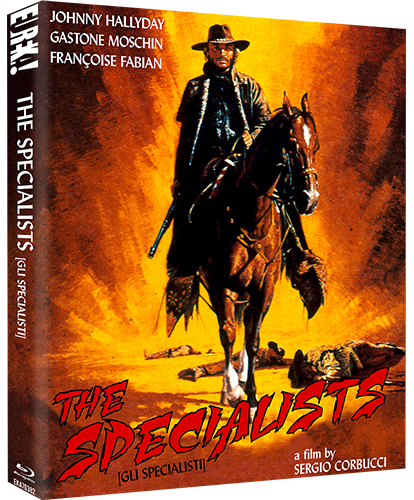
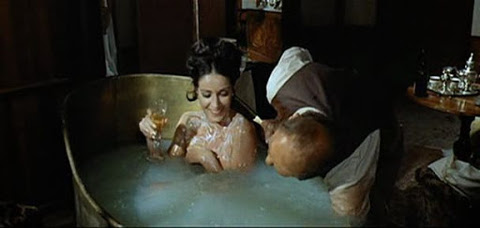
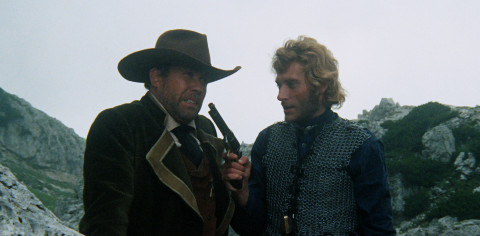

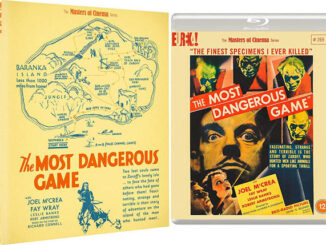
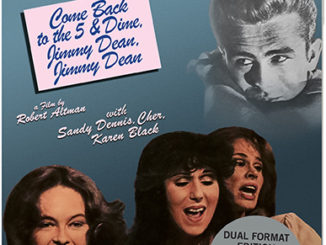
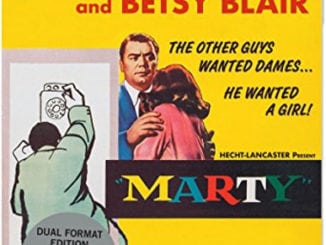
Be the first to comment